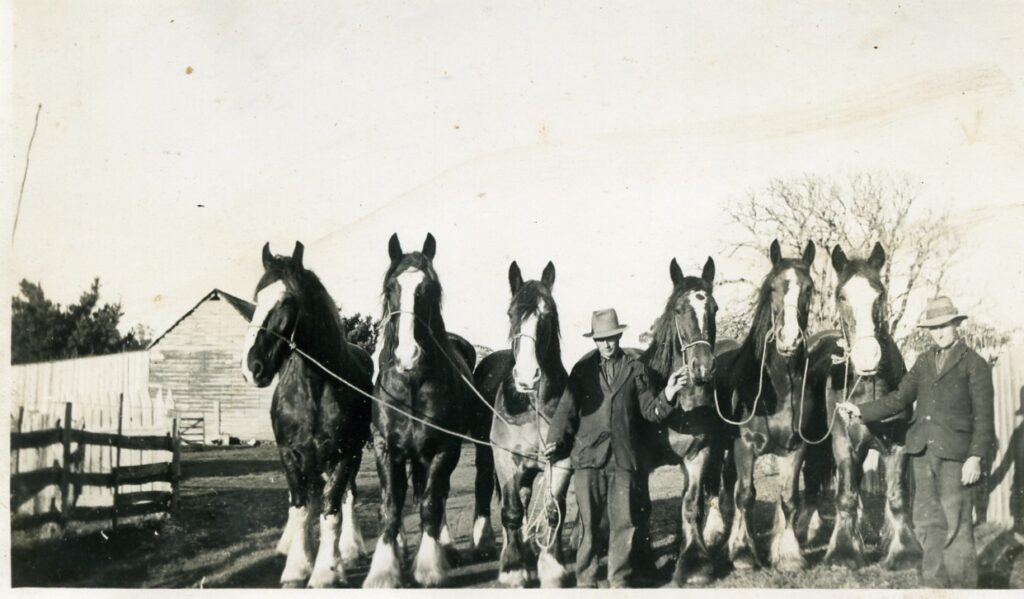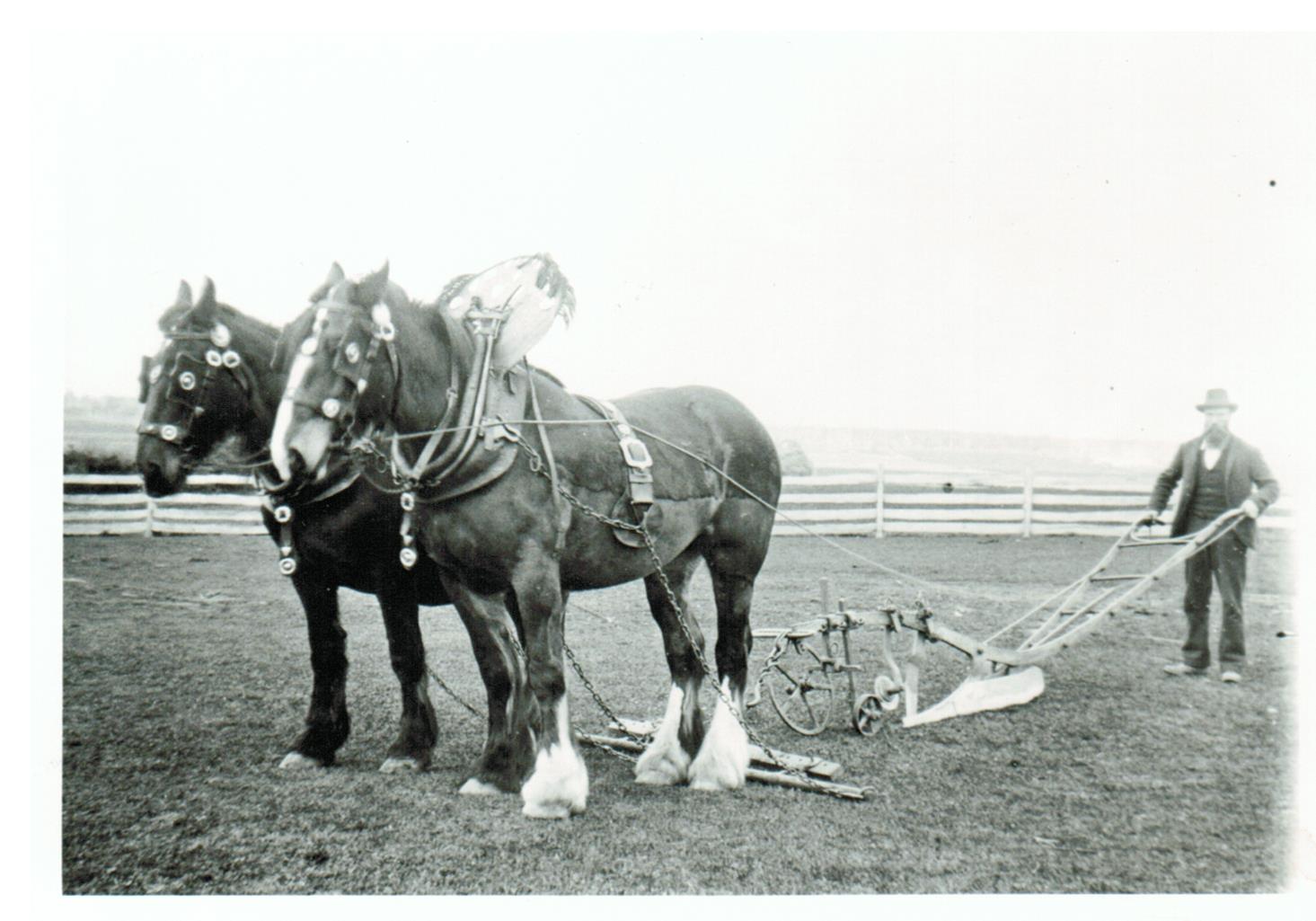
The importance of the horse through the 1800s is indicated by the fact that the horse was included as an essential when our State was first settled, two horses being brought ashore in 1803 at the Risdon settlement on the banks of the Derwent and one by Paterson in the north at Port Dalrymple the following year.
Horse numbers were to steadily grow, increasing to 2,500 in 1830, 17,000 (1850), 22,000 (1870), 30,000 (1890) and reaching a peak of 42,000 in 1910 before going into rapid decline with the arrival of the internal combustion engine.
The importance of the horse was the feature of an extraordinary ploughing event that occurred at “Westfield”, Westbury on Monday, May 21, 1853. The Examiner newspaper correspondent of the time noted that on the day ‘upwards of 80 teams of horses had reached the property by sunrise and by 9 o’clock had increased to 126 teams.’ These teams were set to work ploughing and by 4.30 that same afternoon, had managed to turn over 110 acres of ‘very stubborn’ soil.

Interestingly it was not a ploughing match and no prizes were given – rather it was for the purpose of demonstrating the strength of the district. The correspondent went on to laud, ‘it was a feat we believe without precedence in the history of the Colony’ and further noting that the value of the horses present on the day as being £30,000, a huge sum for the time.
It is likely that many of the above horses were the progeny of a stallion, with the kingly name of ‘CZAR’, imported by the well known colonist, Henry Reed in 1833. This Clydesdale horse became famous throughout the north of the Island and played a great part in establishing a good strain of heavy horses very suitable for the plough and other farm work.
Henry Reed, also in 1833, imported the horse ‘CARWELL’, reputedly at a purchase price of £1,000, with this horse too becoming highly regarded by many. The horse had been bred by Lord Mountcharles and foaled in 1828, and by the time of purchase had in England, won upwards of 20 Plates and matches.
Henry when advertising his horse as being at stud on his Norfolk Plains property, described ‘CARWELL’ as “dark brown free from white, stands 16 hands, of great power and bone and well calculated to get useful stock, particularly for the carriage”. The service charge at £7-0-0 and 7s. for the groom was not cheap.

Possibly it was an offspring of this horse that Henry Reed used in his mercy dash to Hobart when he sought to obtain a stay of execution for a condemned man held in the Launceston police cells. Henry became convinced of the man’s innocence and with no time to waste, immediately set out for the 120 mile dash to Hobart, hoping to obtain a reprieve document from the Governor.
The facts were presented to the Governor but it was a slow process, the hours ticked away stretching into days. The last day had arrived with the condemned man due to go to the gallows early the next morning. At last a reprieve was granted but the Launceston bound coach had left hours earlier.
Henry found a jockey and set him on the race horse, instructing him to overtake the coach and deliver the reprieve to the Officer carrying the Governor’s dispatches. The coach was caught up with at Campbell Town and the reprieve delivered, saving the man from the dreaded gallows.

Throughout the 1800s the horse was the main power in Tasmania, the chief means of transport, both for riding and the carriage, and in agriculture the chief means of pulling the plough and carting produce to market. Little wonder that the horse was a prized possession and much valued.
Written 1 May 2005



Hi Ivan,
They’re great photographs. Geoff was wondering if any of the horses were Shires? His Uncle, Charlie Priestley of Scottsdale had Shires. The horses in these photos dwarf the men, don’t they?!
Best wishes,
Rowena Newton